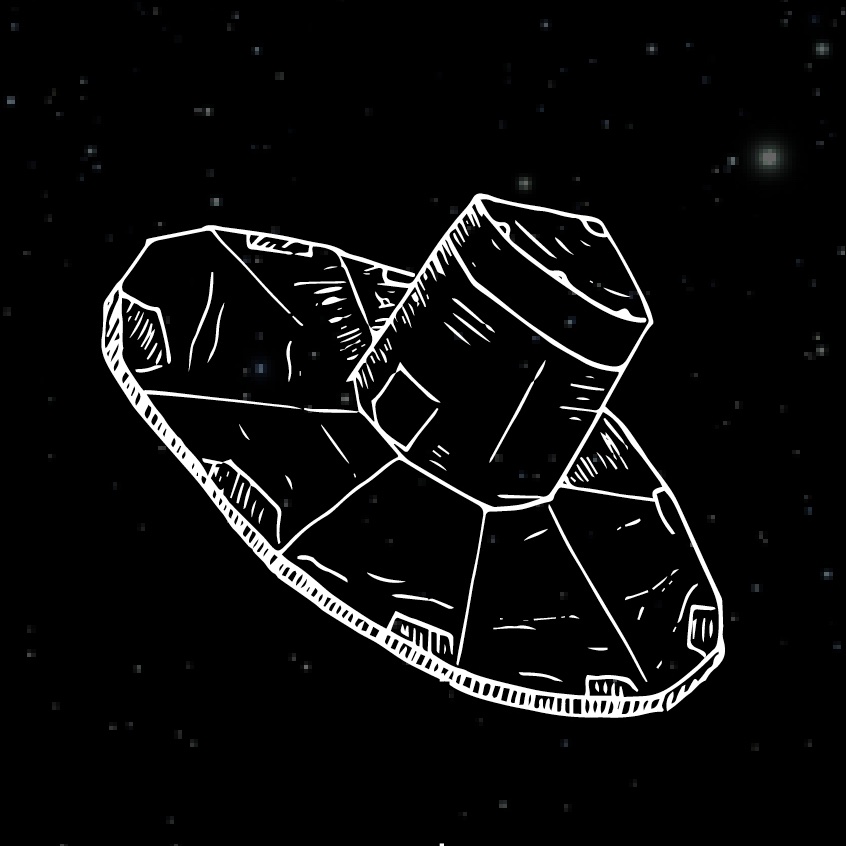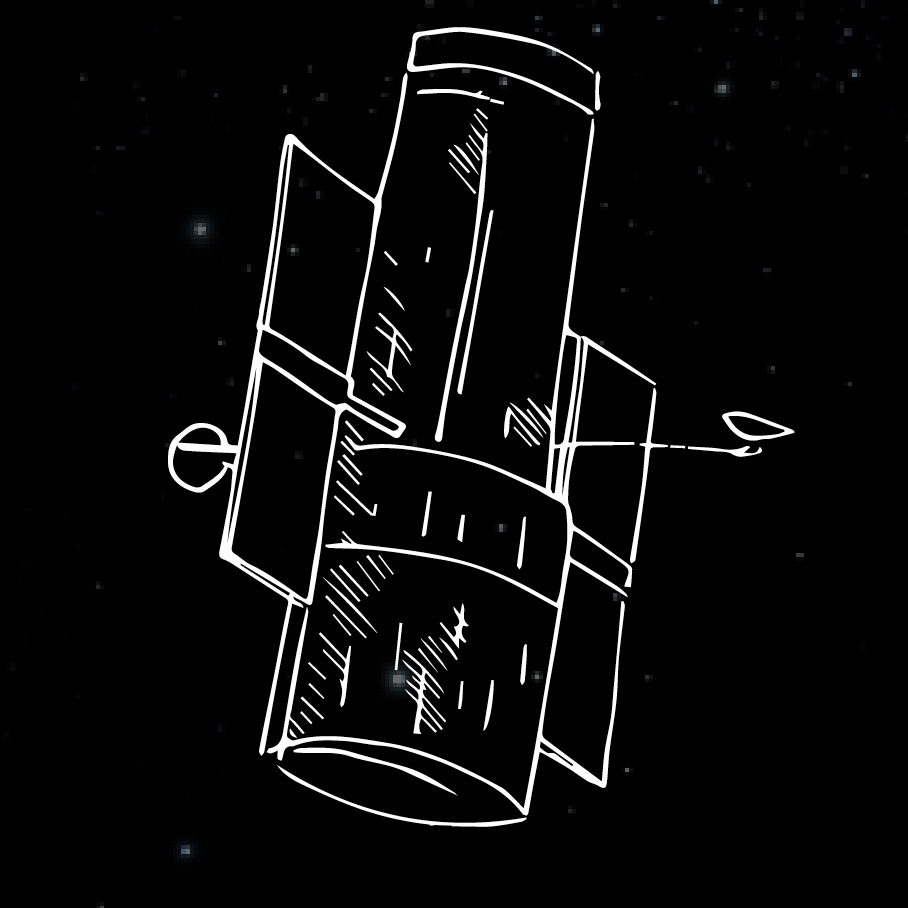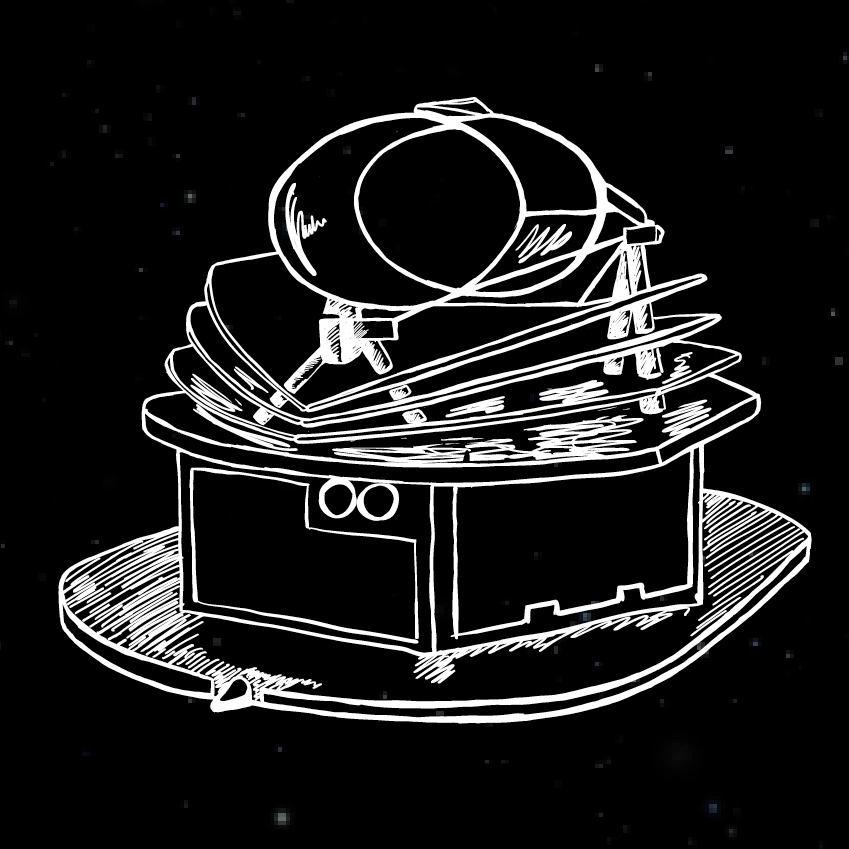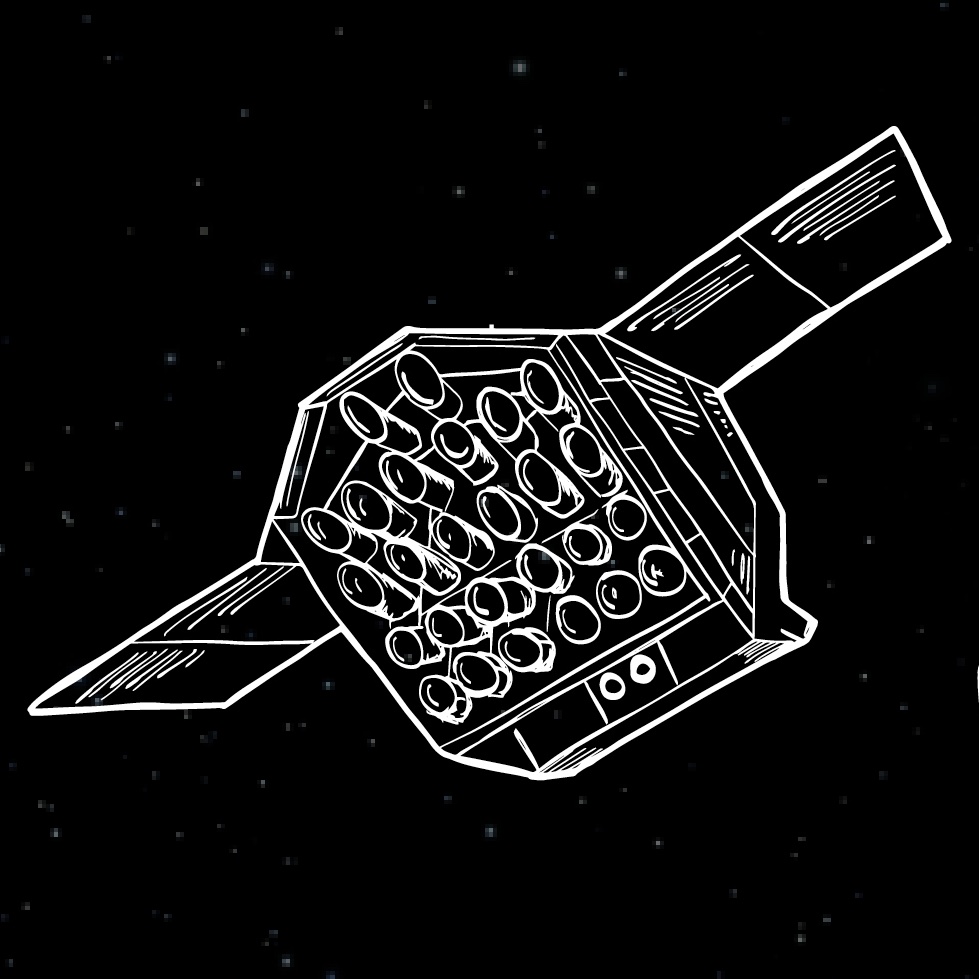Exoplanet missions - ExoplanetsWorkingGroup
Our Missions
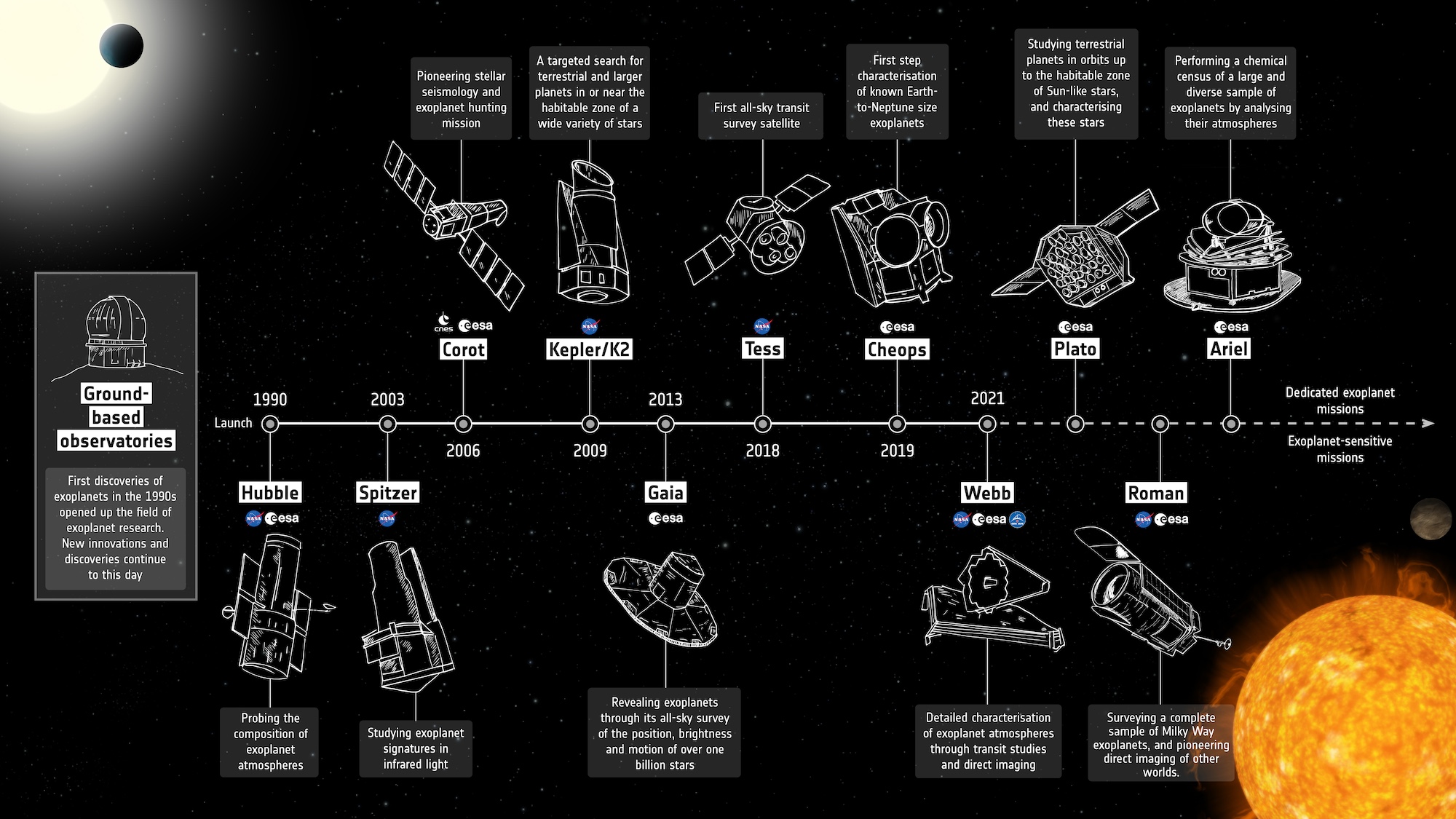
Current ESA Missions
| NASA/ESA/CSA JWST - James Webb Space Telescope, launched in 2021. It is the next great space science observatory following Hubble, designed to answer outstanding questions about the Universe and to make breakthrough discoveries in all fields of astronomy. Webb will see farther into our origins: from the formation of stars and planets, to the birth of the first galaxies in the early Universe. | |
| ESA CHEOPS - CHaracterizing ExOPlanet Satellite, launched in 2019. It is the first mission dedicated to studying bright, nearby stars that are already known to host exoplanets, in order to make high-precision observations of the planet's size as it passes in front of its host star. It focuses planets in the super-Earth to Neptune size range, with its data enabling the bulk density of the planets to be derived – a first-step characterisation towards understanding these alien worlds. | |
| ESA Gaia - ESA's billion-star surveyor, launched in 2013. Gaia will create an extraordinarily precise three-dimensional map of more than a thousand million stars throughout our Milky Way galaxy and beyond, mapping their motions, luminosity, temperature and composition. This huge stellar census will provide the data needed to tackle an enormous range of important questions related to the origin, structure and evolutionary history of our galaxy. | |
| ESA/NASA Hubble - A flagship space telescope launched in 1990. Expanding the frontiers of the visible Universe, the Hubble Space Telescope looks deep into space with cameras that can see across the entire optical spectrum from infrared to ultraviolet. |
Upcoming ESA Missions
| ESA Ariel - Planned launch in 2029. It will perform a chemical sensus of a large, well selected, and diverse sample of primarily warm and hot exoplanets orbiting nearby host stars with a wide range of spectral types. | |
| ESA PLATO - PLAnetary Transits and Oscillations of stars, planned to launch in 2026. It will open a new way in exoplanetary science by detecting terrestrial exoplanets and characterising their bulk properties, including planets in the habitable zone of Sun-like stars. PLATO will provide the key information (planet radii, mean densities, stellar irradiation, and architecture of planetary systems) needed to determine the habitability of these unexpectedly diverse new worlds. PLATO will answer the profound and captivating question: how common are worlds like ours and are they suitable for the development of life? |
Other Missions with ESA scientists involved in data analysis
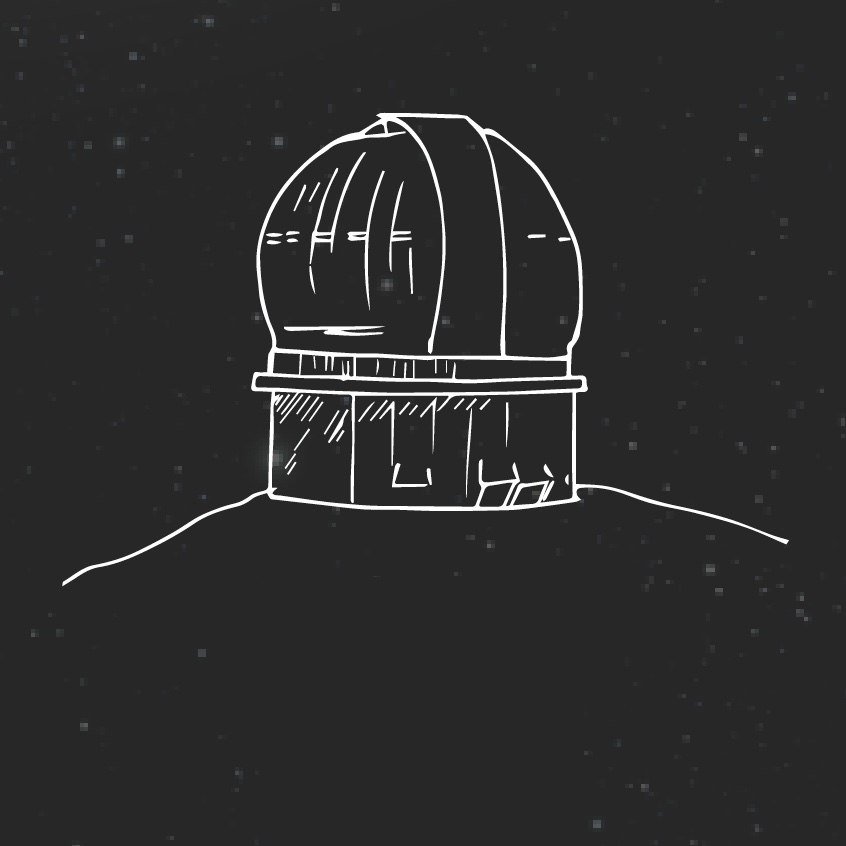 |
ASTEP - Antarctic Search for Transiting ExoPlanets. A ground-based, 40cm telescope in the Antarctica, on which ESA holds a 20% observing time share. |
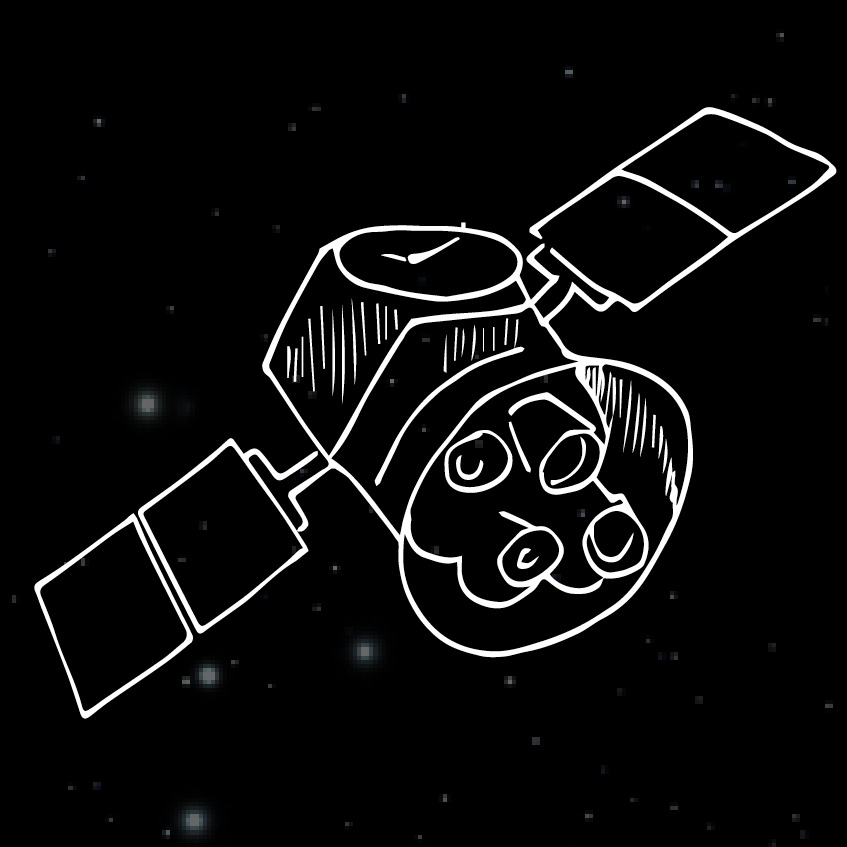 |
NASA TESS - Transiting Exoplanet Survey Satellite, launched 2018. It is an all-sky survey mission to discover exoplanets around nearby bright stars. |
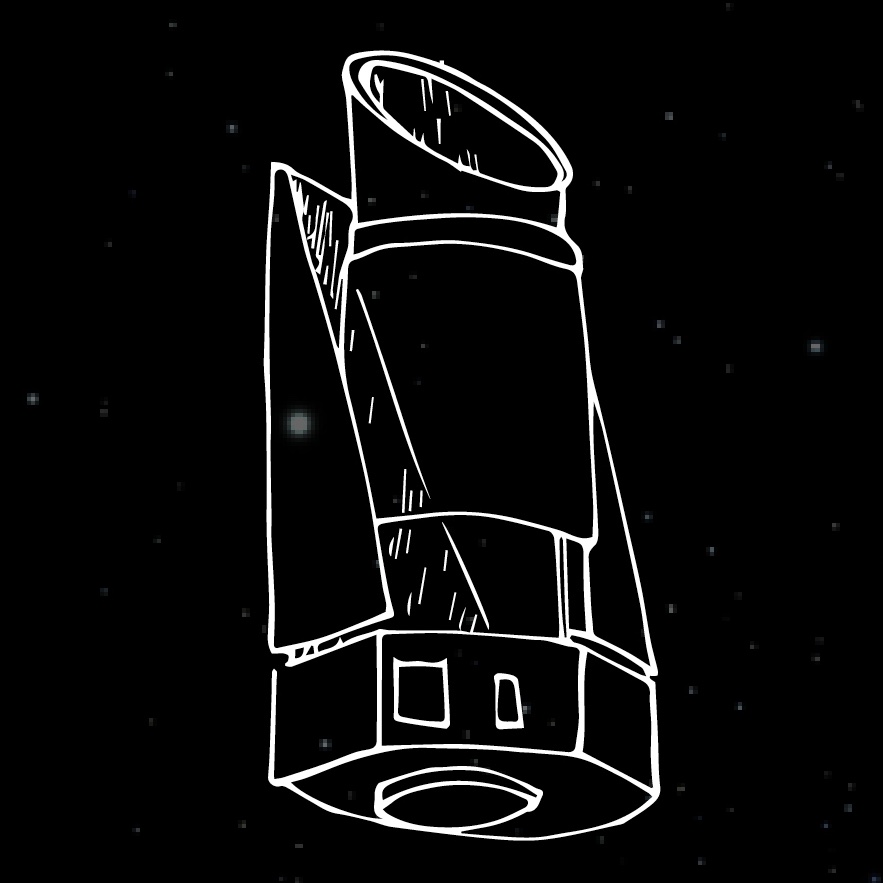 |
NASA Kepler - The Kepler space telescope operated 2009-2018. It was an exoplanet space telescope searching for Earth-like exoplanets around Sun-like stars. |
Last updated 1 Feb 2024
- Removed a total of (9) style text-align:center;
- Removed a total of (9) style margin:0;
- Removed a total of (3) align=center.
- Removed a total of (3) border attribute.
- Removed a total of (3) cellpadding attribute.
- Removed a total of (3) cellspacing attribute.








































 Sign in
Sign in
 Science & Technology
Science & Technology


